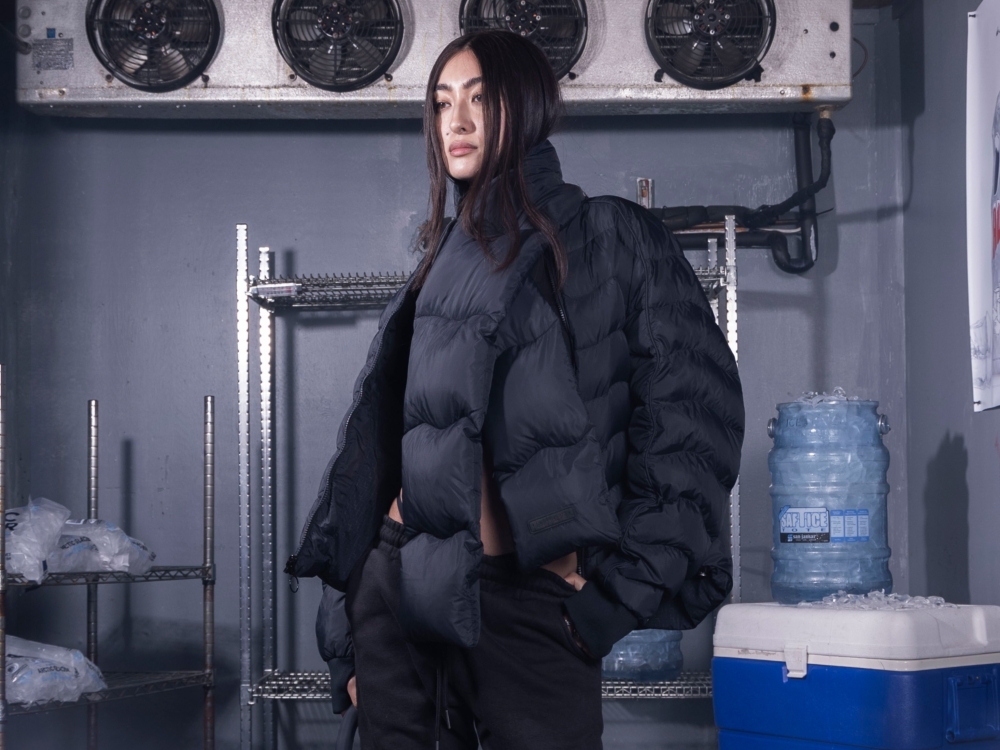It is always a pleasure to watch someone chase a dream, harness it, and wrestle it to fruition. For Vancouver-based designer Alexandra Dean, the dream was to start her own outerwear brand. Dean loved the outdoors. She had extensive expertise from years of working in sustainable design. She wanted something that catered to herself as a consumer and a lover of complex construction; a careful balance of form, function, and style around an ethos of sustainability. Thus, in 2022, Dean founded Adhere To Studios and ushered in a new age for Vancouver’s outerwear industrial complex.
Sitting somewhere between industrial streetwear and the tech wear gothic style, Adhere To presents a refined wardrobe for tonal dressers in an age of monochromatic minimalism. Everything being made from one hundred percent recycled premium materials is also worth noting for what it reveals about what exactly is being adhered to. Dean, it seems, is setting the brand up to become a movement of conscious consumption, where luxury is redefined as the reward of making a positive impact rather than the simple excess of having more. Adhere To, therefore, is the motto before it is the label.
Liminul recently sat down with Dean to discuss Adhere To, her design philosophy, and the challenges of sustainable production in the evolving landscape of outerwear in fashion. Dean reflected on the intersection of technical achievement, aesthetic expression, and restraint, the inspirations behind her latest collection, and how she envisions the future of her brand in an age of mindful enterprise. She spoke, sparking with the deeply serious knowledge of someone who knows exactly who they are, and, by default, exactly what they want.
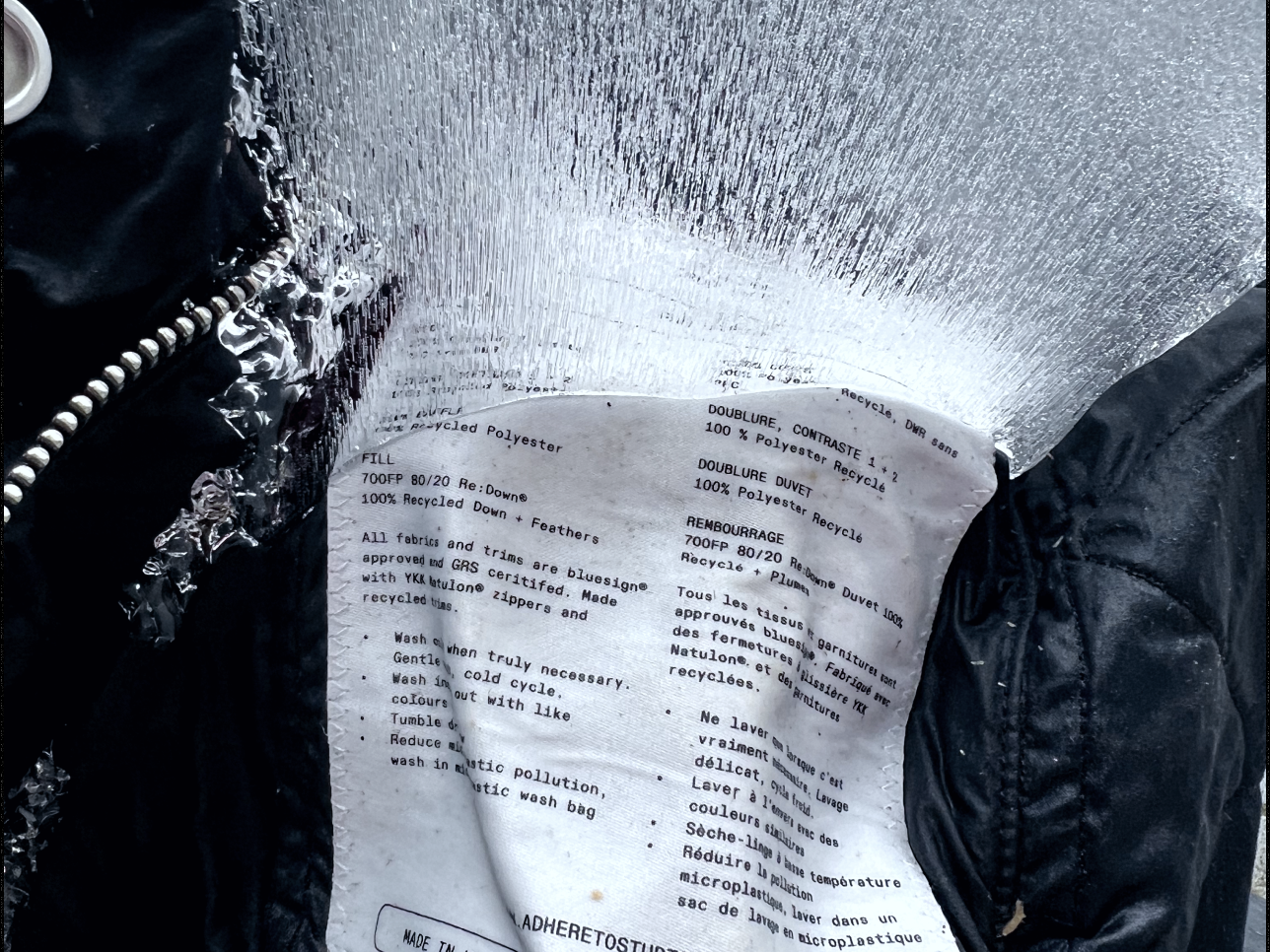
I love the brand name Adhere To. It feels like a mission statement. Where does that come from?
Yeah, naming was really tough for me in the beginning. I wanted something that reflected both the brand’s mission and the consumer’s role in it. Adhere To is about holding myself—and the brand—to a higher standard, ensuring we use the lowest-impact materials for outerwear. If I’m creating something new, it has to have purpose, function, and durability. There’s already too much waste in fashion, and I want to make pieces that last, not fall apart.
It’s also about the customer. By choosing Adhere To, they’re investing in quality and aligning with a more responsible way of consuming fashion. The price isn’t entry-level, but it’s not demi-luxury either—yet the craftsmanship and attention to detail make it feel like a luxury product. Visually, I also liked the structure of the two words together. So yeah, that’s how the name came about.
It sounds like a challenging yet rewarding standard to maintain for both you and your consumers. What are some of the biggest challenges you’ve faced in sticking to ethical and environmental standards, whether financially, creatively, or logistically, and how do you navigate them?
The biggest challenge is definitely cost. As a self-funded small business, I still freelance for other brands to support Adhere To. High-quality and sustainable materials always come with a higher price tag, which affects both me as a brand and the customer. The final product costs more than your average jacket from, say, Aritzia, but that price reflects the craftsmanship—custom hardware, thoughtful design, and meticulous details throughout the garment.
Sourcing materials and building a supply chain can also be difficult, but thanks to my experience working with fabric mills and factories at companies like Lululemon, I know how to navigate it. Finding the right materials that align with my sustainability standards can be a challenge, but I see it as a puzzle I enjoy solving. With outerwear, one jacket can have 25 to 30 components, so ensuring everything meets my brand’s guidelines is a complex but rewarding process.
Another challenge is order quantity. As a small brand, my production runs are low, which often means surcharges from fabric mills. That trickles down into the final garment cost, making it harder to keep prices accessible. My pricing sits in the demi-luxury range—not high-end luxury, but definitely not mass-market. Still, I believe the right audience will appreciate the quality, craftsmanship, and sustainability behind each piece, seeing it as an investment rather than just another purchase.
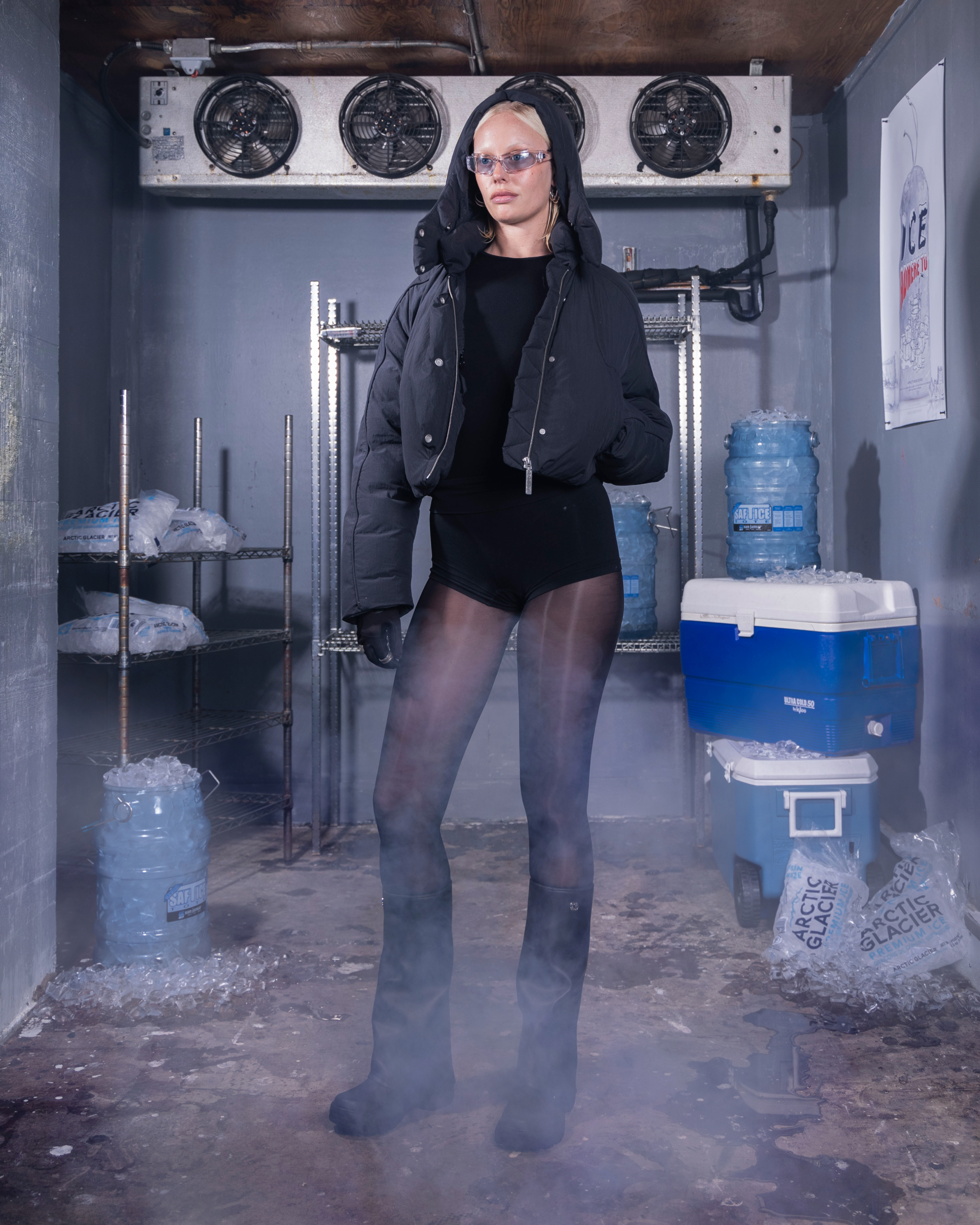
Absolutely. From personal experience, when you engage with clothes made from an intersectional or compassionate perspective, there’s this unique feeling of niceness or warmth that comes through. Can you describe that feeling?
I totally agree. When I invest in a piece I really love, like a designer item, I can feel the quality. A $400 top may seem expensive, but I’ll reach for it way more than a Zara top, which might fall apart after a few wears. It’s a true investment — something that brings me joy because it stays beautiful and timeless in my closet. That’s where my mindset is.
You mentioned your experience working in Lululemon’s design department. As Adhere To grows, how big do you envision the brand becoming? Do you see it reaching a scale similar to Lululemon?
I’m not sure if reaching the scale of a brand like Lululemon is realistic right now, but I wouldn’t say no to growth. For now, I’m focused on short-term goals. Growth is important, but I want to be smart about it—especially since it often comes with a significant investment. I’ve been weighing the pros and cons of bringing in investors, but right now, my main goal is to eventually step away from my other business, an apparel group where I design and develop brands for others. I want Adhere To to be my full-time focus, with a strong team, a well-oiled operation, and a profitable income. Growth is a priority, but I’m taking it one step at a time. It’s still niche for now, but you never know—everything starts small.
I’d love to hear more about the brand’s aesthetics, specifically the colours, silhouettes, and textures. What drives your design choices, and what kind of story are you trying to tell through them? Also, how do you want people to feel when they wear your clothes?
My design ethos is all about creating functional pieces with a contemporary, fashion-forward feel. Growing up in Vancouver, a tech-driven city with a lot of rain, I always found myself facing the issue of choosing between practicality and style. I’d have a nice outfit, but then a rain jacket would ruin the look. After working in outerwear design at companies like Lululemon, I realized there didn’t have to be such a divide between aesthetics and functionality, especially when it came to sustainable outerwear.
The design itself is deeply personal to me. I’m influenced by music, especially European techno, and my time spent in Berlin. I love silver hardware, angular shapes, and relaxed fits. I tend to gravitate toward traditional men’s wear, which is why I create pieces that are genderless—like a cropped jacket that appeals to both men and women.
Ultimately, I want people to feel good in their outerwear, without compromising on style or functionality. Whether they’re braving the rain or just want to feel confident and sexy, my goal is for them to wear something that aligns with their personal style and needs.
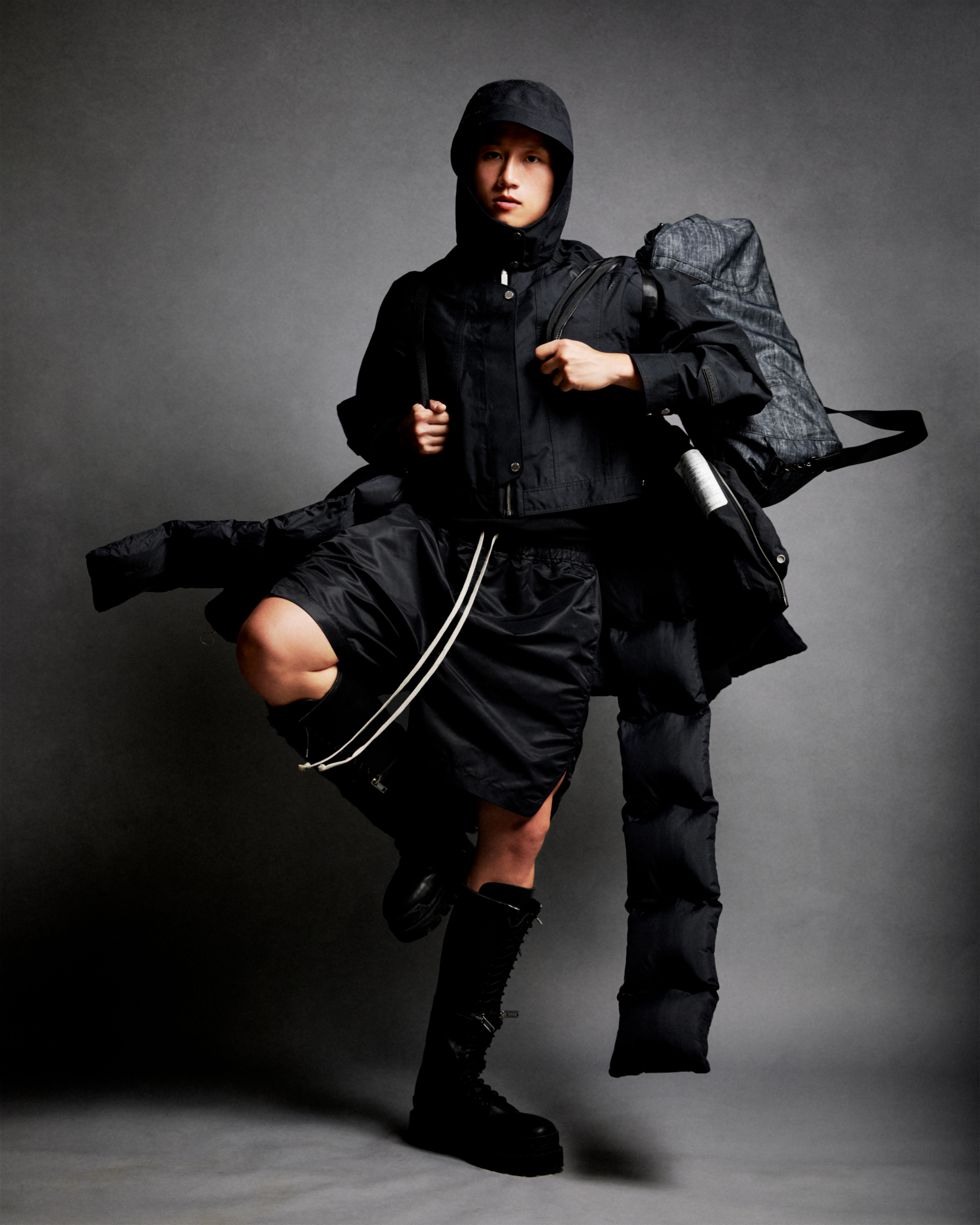
Going back to sustainability, functionality, and aesthetics—since starting the brand, how have your ideas around these aspects evolved? Have they changed, or become clearer over time?
I’ve definitely become more focused, getting a clearer sense of what works and what doesn’t. I’m not constantly dropping new collections; instead, I’m building out core pieces that can work throughout the year. I haven’t focused on summer yet, but I’m working on a transitional collection, starting with lightweight waterproofs that move to heavier ones, plus lightweight down jackets that zip into the waterproof jackets. I’m especially excited about a long trench coat coming in March. It’s waterproof, built for extreme rain, with a sleek, structured look that’s soft and drapey. I’ve been working on it for two years—it’s been a process because I’m often indecisive about my own work. For fall/winter, I’m aiming to release a long down jacket, but I’m a bit behind. I’m not focused on creating new products all the time, but rather on filling out the line with intentional, low-impact designs.
I’m curious about how you balance your personal vision with what people want. You’ve mentioned how your standards guide the brand, but where do you draw the line between staying true to your beliefs and giving in to what’s popular? How do you know when to stick to your guns?
My target market is essentially me—a creative in their 30s, likely working in a creative industry or with a strong love for art, fashion, and the outdoors. They’re also into going out and dancing. When I design, I’m thinking about what I want to wear when I go out but can’t find it. I own a lot of jackets, but there’s always something off about them—whether it’s a trend or just not quite right. For example, I have this long leather trench I love, but it’s not warm enough, so I thought, “Why not design something similar, but with down for warmth?” That’s where my ideas come from—practicality meets style.
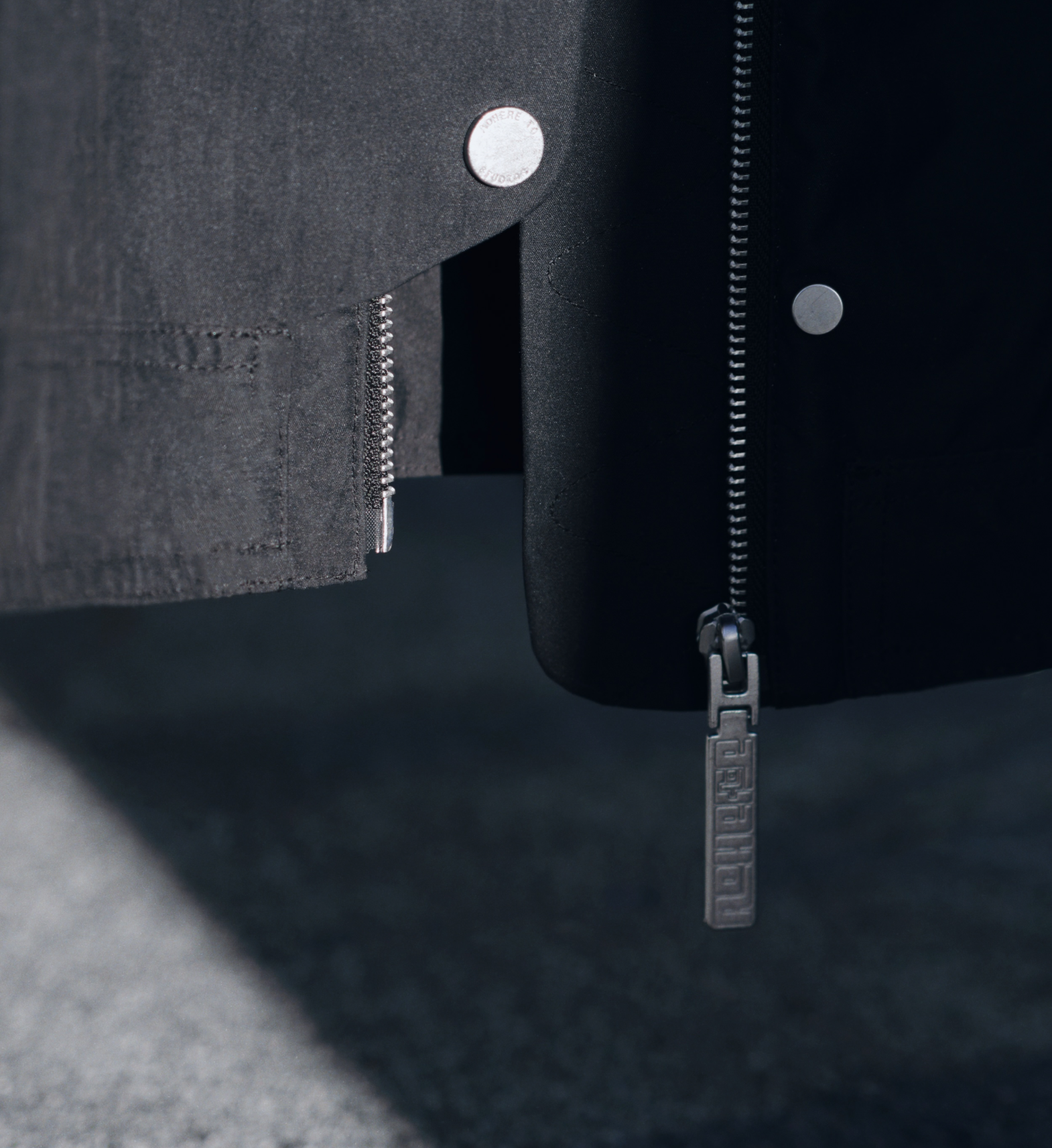
What’s your favourite piece you’ve made, like the trench coat or the long bucket for fall? I’d love to hear about your design process, from the initial concept to bringing it to life in a practical, wearable way.
I start by sketching ideas on my iPad, then move to technical drawings. Once I have a design, I focus on finding the right fabrics and materials. I build out detailed specs, including stitching, components, and any unique features like removable hoods. I work closely with a pattern maker who specializes in outerwear to ensure the fit and functionality are spot-on while pushing the boundaries of traditional design. Then I create a bill of materials, which I send to the factory along with the technical drawings and patterns. They produce the first sample, which I fit and review, making necessary adjustments. This process usually involves about three prototypes, particularly with outerwear due to its complexity. Once we finalize everything, we move to bulk production, making sure the fit works across all sizes. Right now, the factory is working on the trench, which should be ready by the end of the month. It’s a lengthy process, but rewarding when it all comes together.
You’ve mentioned that Adhere To is designed for people like you, and I’m curious—how have you changed as a person since starting the brand? How does that growth shape the complexity you bring to your designs? And on that note, how do you balance creating garments that are both intricate and wearable?
I think there are a few parts to this. First, in terms of my design language, I’ve always loved angular shapes and black apparel. I do use colour—usually just one—but black is my go-to. Honestly, it’s partly laziness. Wearing all black makes me feel put together, while lighter colours—especially white—are just a mess waiting to happen. I’m clumsy, so black is safe. But that’s just me. I love seeing colour on others and in certain garments.
That preference has been consistent since I was about 19, but in the last few years—especially after turning 30—I feel like I understand myself and my design approach much more. It’s a cliché, but it’s true. In my 20s, I was more influenced by what was around me. Now, at 33, I’m much clearer on what I want, and that confidence translates into my work.
As for balancing originality with commercial appeal, my time at Lululemon played a big role. I was never their typical customer, so when designing, I was always pushing things a little too forward—just edgy enough to challenge the market but still accessible enough to work. The merchandising team often hesitated at first, but time and again, those riskier pieces became bestsellers. That experience taught me how to walk that line between creative expression and wearability.
That balance is key with Adhere To. My customer isn’t necessarily a reflection of me, and I don’t want to design solely for myself. I try to showcase versatility—how a piece can be styled in different ways to make it more approachable. Sometimes I get caught up in a specific aesthetic, but at the end of the day, fashion is about how you wear it. I want my designs to feel accessible while still maintaining a distinct point of view.
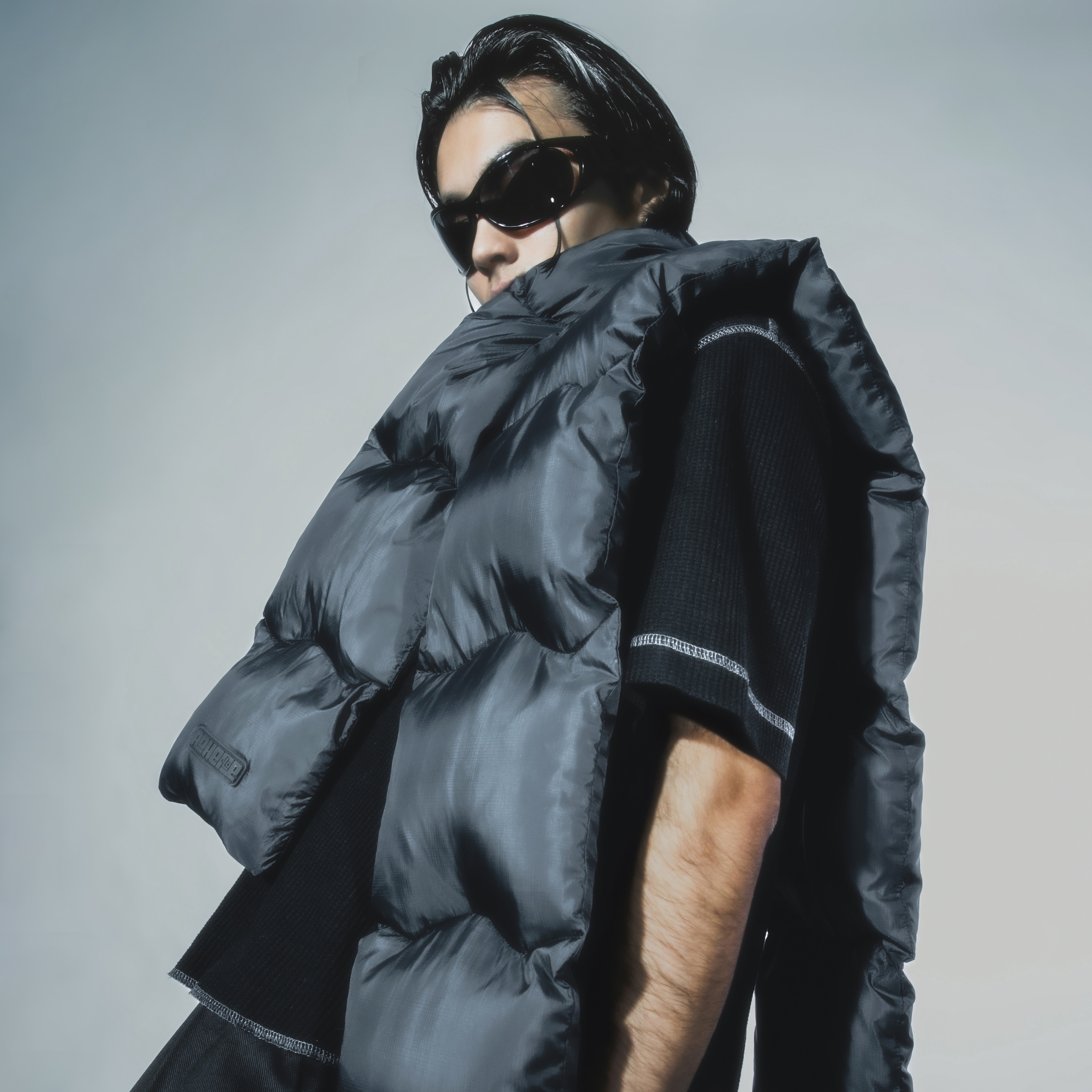
For my last question—you’ve touched on this a bit, wanting to make Adhere To a full-time venture with a solid team. But, if you could manifest a dream scenario for the brand, what would it be? Maybe a concept store, a collaboration, or just a defining moment you hope to reach?
Well, a collaboration would be great! When you ask me on the spot, I have a whole list in my head. I’d love to work with 66°North—they’re huge, so I don’t know if that would ever be possible. Rains would be amazing too; I love the direction they’ve taken in the past few years. I don’t know if we’re competitors exactly, but I think there’s something interesting there. Even working with architects could be exciting, especially with the sustainability and community aspect of a smaller Vancouver brand.
As for my brand’s growth, I’d love to have my own design office—a showroom, studio, and inventory space all in one. Right now, my inventory is in a rented space, and my studio is part of my apartment, which works for now, but having my own space would feel amazing. I also want to build a strong team—right now, I have a part-time employee who’s incredible, but I’d love to expand and create a real community within the brand. Having a showroom would also allow me to host events and connect with new clients in a more meaningful way.
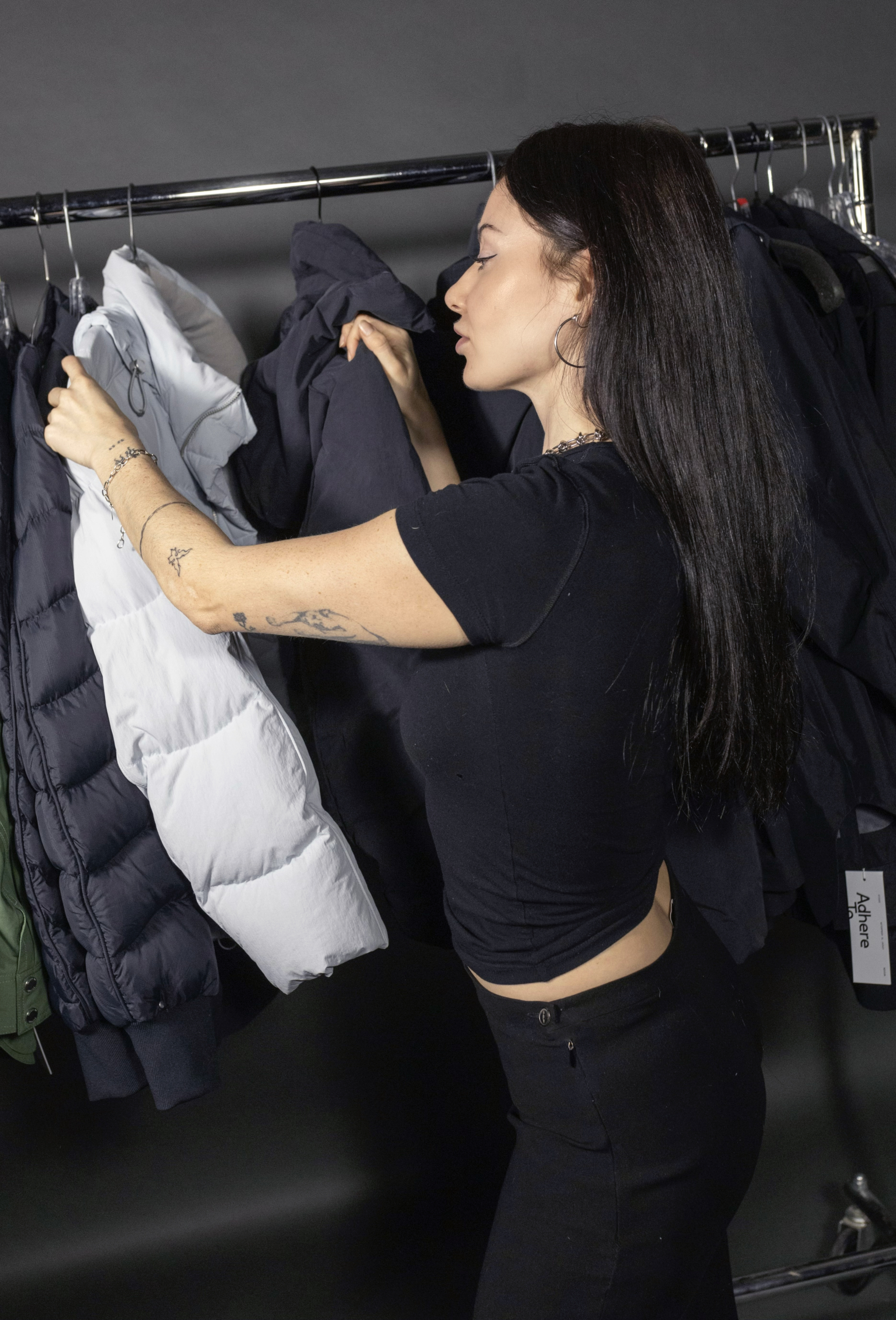
This interview has been edited for clarity.
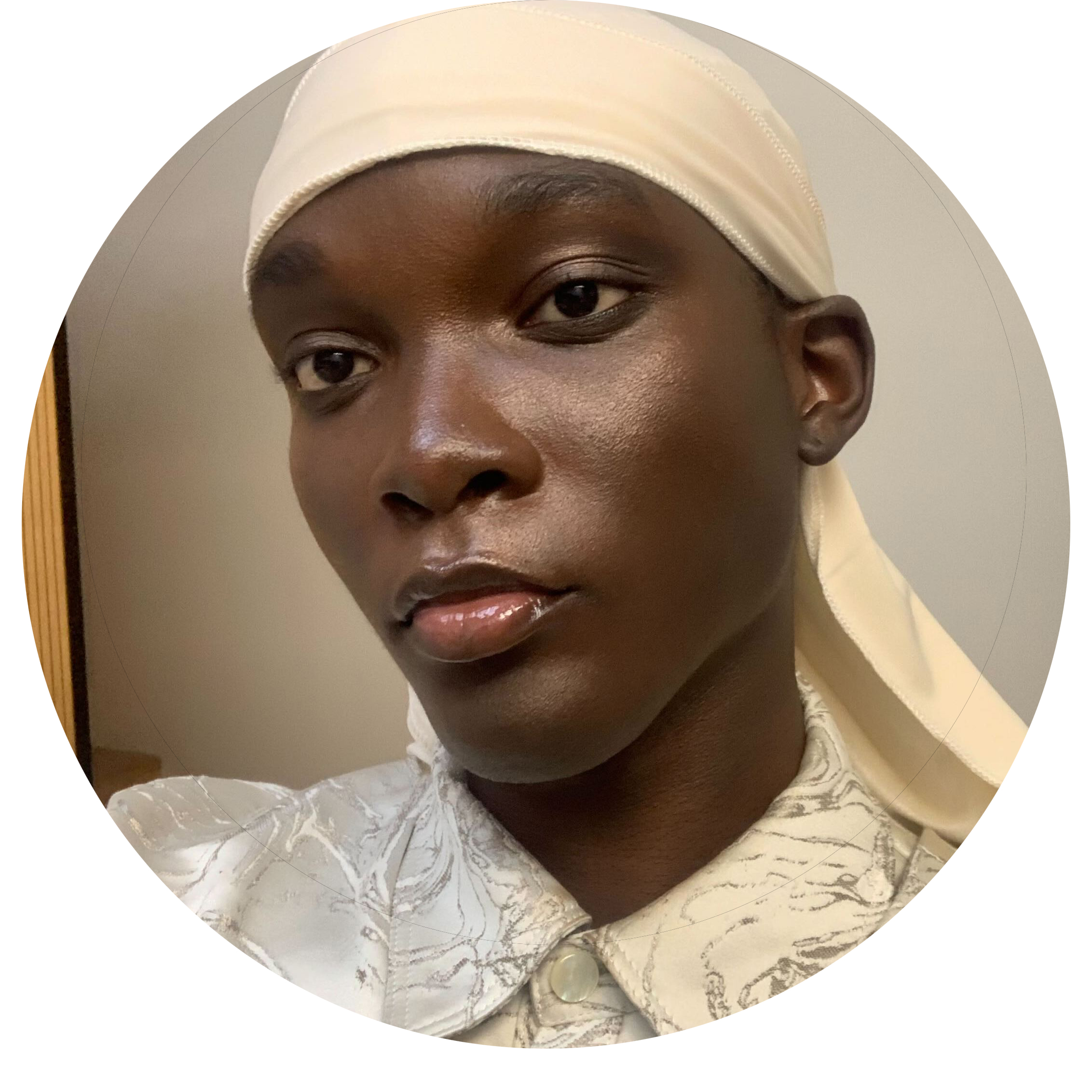 Jonathan Divine Angubua is currently finishing his undergraduate studies at the University of Toronto. He enjoys any interesting art and is always looking for great book recommendations. As a writer and lover of fashion, he is most inspired by strangeness and beauty.
Jonathan Divine Angubua is currently finishing his undergraduate studies at the University of Toronto. He enjoys any interesting art and is always looking for great book recommendations. As a writer and lover of fashion, he is most inspired by strangeness and beauty.

